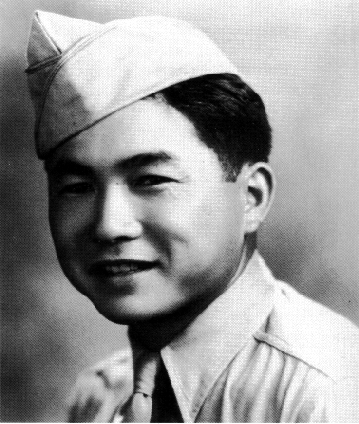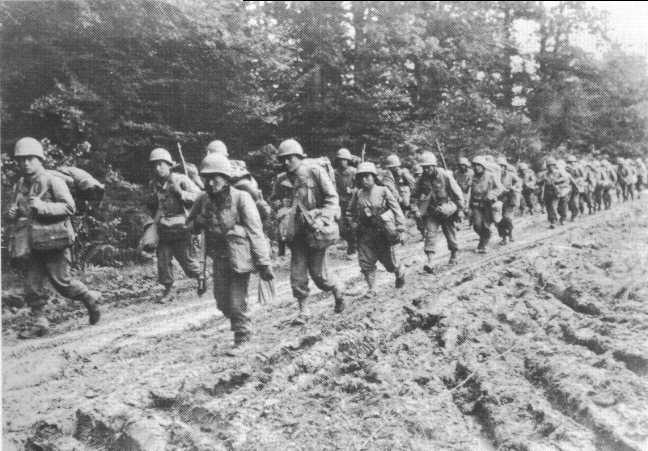THE EYE: HOMEFRONT (Part Four)
- Daniel García Ordaz

- Mar 14, 2018
- 6 min read
Updated: Jul 2, 2019
The long road to recovery after a storm and a war . . .
(Published originally in The Valley Morning Star, Harlingen, on the eve of the 2006 Hurricane Season.)
This four-part series gives a glimpse of the Valley before, during and after the hurricane through the interweaved story of a Rio Grande Valley family caught in the many storms of life.
EDITOR'S NOTE: In September 1933, the Rio Grande Valley was struck by Storm No. 11, causing 40 deaths, 500 injuries and $17 million in damages. Over the next four days, a series of articles will chronicle the events surrounding Hurricane No. 11 through the eyes of a San Benito family — the Tanamachis.
The long road to recovery after a storm and a war
By DANIEL GARCÍA ORDAZ Valley Morning Star
The Labor Day hurricane of 1933 had threatened to make a footnote of the Rio Grande Valley.
With their backs against the water, residents eventually recovered with the help of neighbors and their president
The hurricane blew in on Sept. 4 and 5 with winds of about 125 mph, dropping 9.3 inches of rain in two days. The devastation was overwhelming, but help was on the way.
Aftermath
The Red Cross provided money for home reconstruction materials and the Reconstruction Finance Corporation provided labor. The Mercedes News-Tribune reported that a statewide “Buy Valley” marketing campaign was inaugurated in Houston on Sept. 11.
On Sept. 15, the National Recovery Administration announced that a federally mandated 33-cent minimum wage for unskilled day laborers would be temporarily suspended in the Valley.
A Valleywide committee started a comprehensive appraisal of the damage to crops, livestock, homes and buildings on Sept. 14. The group was headed by John H. Shary, of Mission, later known as the father of the Texas citrus industry.
According to the Mercedes News-Tribune, the group incorporated as Rio Grande Valley Rehabilitation and Relief Corporation, a nonprofit organization aimed at directing efforts for storm relief. The group gathered data regarding the extent of damage via 50,000 questionnaires. A final report was submitted to authorities in Washington, D.C., on Sept. 22 as a basis for seeking relief.
Damage was estimated at about $17 million in 1933, or $230 million in today’s dollars, when adjusted for inflation. The citrus industry lost $8 million. By federal regulation, citrus could not be shipped until Sept. 1. Of the 750 carloads expected, only 75 carloads were shipped and a third of them rotted before reaching their destination. Winter crops were also lost.
On Sept. 27, Claude Carter of Harlingen, who had led relief efforts immediately after the hurricane, led a delegation to Austin to negotiate a loan to the corporation, which planned to re-loan the funds to Valley entrepreneurs.
That same day, President Franklin D. Roosevelt announced that the Public Works Administration, Farm Credit Administration and other agencies would contribute substantially to relief of hurricane survivors in the form of cash (between $300 and $800 per family) for food, clothing, seed and other forms of relief, according the News-Tribune.
Newly elected District 15 Congressman Milton West, of Brownsville, promised construction of roads.
State Representative Augustine Celaya, Jr., (District 72) of Brownsville, and Homer Leonard, (District 73) of McAllen, proposed a bill that would return one-fourth of the state’s natural gas taxes raised in the Valley from 1933 to 1936 to the affected counties to rebuild schools.
Classes were delayed in some school districts, but soon enough, newspaper coverage focused less on the hurricane and more on the new football season. The headlines would shift again, this time to the stormy weather of war.
Home front
In 1928, Lon C. Hill changed the name of his newly developed Rio Grande Valley town of Six-Shooter Junction to Harlingen, in honor of a Dutch canal city, to better reflect the local irrigation canals on which the budding agricultural economy was based.
On the afternoon of May 12, 1940, German forces in the North Sea captured and occupied the port city of Harlingen, The Netherlands. Holland and Germany, however, were an ocean away, and, like the rest of America during the Great Depression, Valley residents were focused more on putting food on the table and less on global events.
Kumazo Tanamachi’s days as a tenant farmer had ended in 1935 when he purchased 50 acres of his own in Los Indios. His son, Saburo Tanamachi, had long since recovered from injuries sustained during the hurricane and was helping to run the farm.
Despite rampant discrimination against Japanese Americans, Saburo’s brothers, Willie and Goro, had enlisted in the Army Air Corps in 1940. Soon after the opening of an air base in Harlingen, Texas, the Japanese bombed Pearl Harbor on Dec. 7, 1941, and instantly Valley farmers were called upon to help feed the country.
On Feb. 12, 1942, Roosevelt issued Executive Order 9066, resulting in the forced removal of about 120,000 Americans of Japanese ancestry (AJAs) from the West Coast. The detainees were sent to internment camps across the country, three in Texas. The Tanamachi family was mostly unaffected by the order until Kumazo’s son, Jiro, then 28, met Kikuko Nakao at a camp in Rohwer, Ark., while he was visiting interned relatives.
Jiro (Jerry) wed 21-year-old Kikuko on June 14, 1943, in an arranged marriage and brought her to Los Indios to raise vegetables. Her family remained interned.
“We had a good life,” Kikuko, 85, said. “He was real friendly, real nice.”
Soon after their homecoming, Jerry went into a burger joint in San Benito and “he took a long time coming out,” Kikuko recalled. Several white people were yelling racial slurs and threatening to harm her husband until some Mexican American soldiers in uniform came to his defense. Their parents had worked for Kumazo in the past.
Just American
In February 1944, Saburo —Kumazo and Asao Tanamachi’s third son — was drafted into the Army and later assigned to the 442nd Infantry Regiment made up of AJAs. Eager to prove his patriotism, he wrote “Just a soldier” on his Army photograph, which he dedicated to his mother.
The story of Saburo Tanamachi starts in the flatlands of the Valley and ends on a hill in France.
Eleven years after Storm No. 11 nearly took his life, the Tanamachi family was notified that Pvt. Saburo Tanamachi was killed in action on Oct. 29, 1944.
Tanamachi was posthumously awarded a Silver Star for gallantry in action and a Purple Heart. He was buried at Pinal, near Bruyères, a farming hamlet that he had helped to liberate from the Nazis days earlier.
As a testament to his bravery and the country’s acknowledgment of the patriotism of the 442nd, Saburo’s remains were moved in 1948 from France to Arlington National Cemetery, where Saburo was one of the first two Americans of Japanese descent honored with interment there.
Epilogue
In 2004 Saburo’s niece, Sandra Tanamachi, led a campaign to have “Jap Road” in Beaumont renamed. Letters poured in from the 442nd recalling how Saburo, a former resident of Beaumont, had inspired a break in the battle in France to rescue a group of trapped Texans serving in an all-white unit, the Lost Battalion.
Several of Saburo Tanamachi’s relatives still make their homes in the Valley.
The 442nd Regimental Combat Team, on which Tanamachi served, was composed of Americans of Japanese descent—many of whom had families still interned in camps by the U.S. government. In the entire history of the U.S. military, the 442nd has been the most decorated unit for its size and length of service. In total, about 14,000 men served, ultimately earning 9,486 Purple Hearts, 21 Medals of Honor and an unprecedented eight Presidential Unit Citations.
~*~
The book, Just Americans: How Japanese Americans Won A War At Home And Abroad, by Robert Asahina, describes the 442nd as well as the fight led by Sandra Tanamachi to rename “Jap Road,” in Beaumont, Texas.
~*~
Pvt. Saburo Tanamachi's Silver Star Medal Citation:
Under the provisions of Army Regulations 600-45, as amended, it is recommended that SABURO TANAMACHI, (38562665) Private, Company E, Second Battalion, 442d Infantry Regiment, be awarded (posthumously) the Silver Star for gallantry in action.
SABURO TANAMACHI, 38562665, Private, Company E, 442d Infantry Regiment, for gallantry in action on 29 October 1944, in the vicinity of Biffontaine, France:
Fighting a desperate enemy who was surprised by an attack from his rear, Pvt. Saburo Tanamachi, acting squad leader, led his squad over Hill 617 with a minimum loss to his squad. On sweeping down the hill, the squad encountered a terrific counter attack from the left flank. One of the members of the squad was severely wounded. In the face of four enemy machine guns and about 12 riflemen, Pvt. Tanamachi crept forward to give aid to his wounded comrade,. occasionally stopping to yell fire orders to his men. Just as he reached his comrade and was about to give him first aid, he was fatally wounded. Roused by the courage of their leader, the squad charged forward and unnerved the enemy who hastily tried 'to withdraw, but the combined actions of the whole platoon overwhelmed the enemy who was either killed or captured. The heroism and courage displayed by Pvt. Tanamachi are deserving of high commendation and reflect the finest traditions of the Army of the United States. Entered military service from: San Benito, Texas. Nearest Relative: Mrs. Asao Tanamachi, mother, Route #4, Box 120-A, San Benito, Texas.














Comments